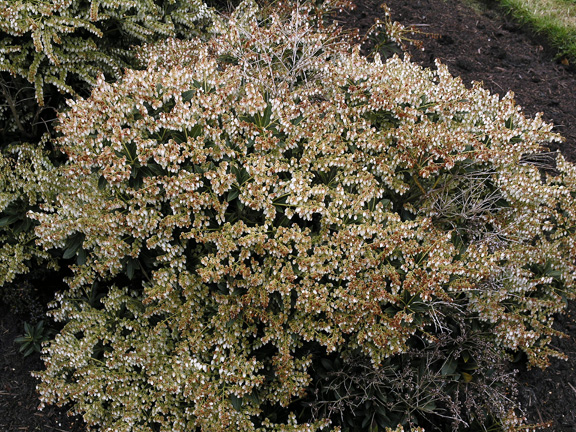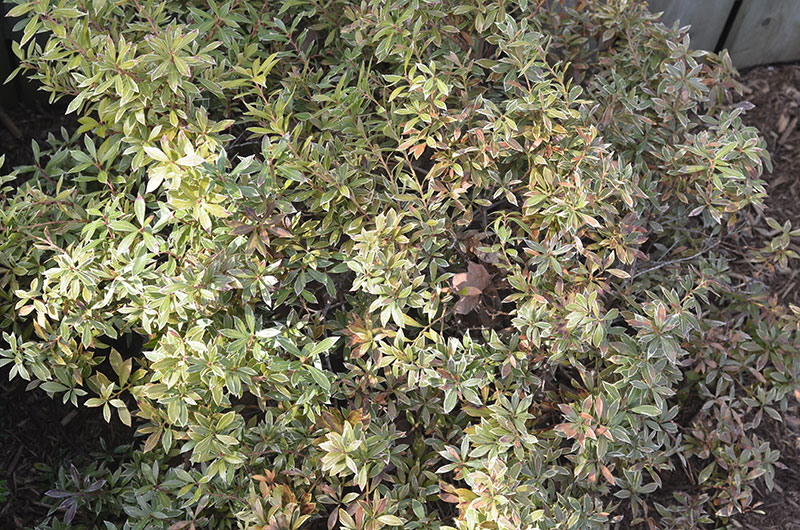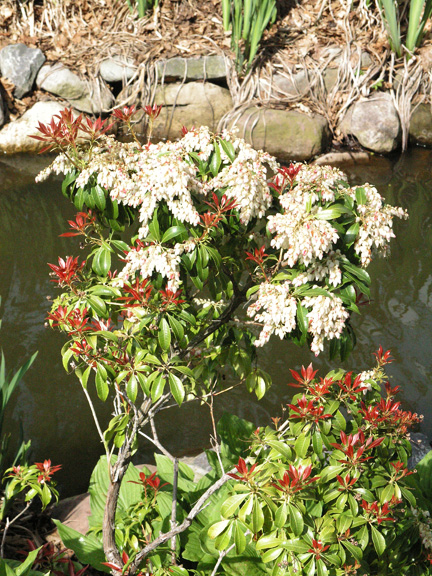
Woody > Pieris > Pieris japonica > Pieris japonica
Pieris japonica
Japanese Pieris
Origin: First cultivated in 1870, introduced by David Don.
Mike's
Opinion


"
A very nice, elegant shrub. In our zone (5b), it probably won't get any larger than 5 feet, but it is still worthwhile to plant. It is somewhat picky as to soil type, so amending the soil with peat moss or other acid type material might be necessary.
Michael Pascoe, NDP., ODH., CLT., MSc. (Plant Conservation)
"
| Family |
| Ericaceae |
| Genus |
| Pieris |
| Species |
| japonica |
| Category |
| Woody |
| Type |
| Tree (evergreen) |
| Pronunciation |
| USDA Hardiness Zone |
| 4b-7 |
| Canadian Hardiness Zone |
| 6-9 |
| Temperature (°C) |
| -31 to -34 |
| Temperature (°F) |
| -10 to-20 |
| Height |
| 1-3m |
| Spread |
| 1-2m |
Photographs
Description and Growing Information
Flowering Period
| General Description |
| Fairly large, flowering, broadleaf evergreen shrub. New growth is red, maturing to a glossy, deep green. Flower buds appear in autumn, and stay the winter until they bloom the next spring. |
| Landscape |
| Excellent evergreen plant, flowers early, and is beautiful when in flower. New growth is a nice red colour. Requires rich, moist, acidic soil, as well as part to full shade, to use as an understory shrub. Requires winter protection if grown in an exposed situation. |
| Cultivation |
| Requires moist, rich, acidic soil and part shade. Needs winter protection in exposed situations, fertilize with a product for plants in acidic soil. |
| Shape |
| Dense, multi-stemmed, loosely rounded shape. |
| Growth |
| Medium |
| ID Characteristic |
| New leaves emerge red/bronze, but turn green as they mature. Produces many panicles of flowers in early April, which last 2-3 weeks. |
| Pests |
| Chlorosis due to neutral or alkaline soils is a problem, but can be fixed. Lace bugs maybe a problem in some areas. |
| Habitat |
| Native to Japan, Taiwan and China, grows in moist, rich, acidic soils, in partial shade. |
| Bark/Stem Description |
| Bark is gray-brown in colour and slightly furrowed, but has little aesthetic value. |
| Flower/Leaf Bud Description |
| Flower buds form in late summer or early autumn, are green to red in colour, persist through the winter and provide some winter attraction. The Buds are small, 1-1.5cm long, and not as wide. The 5 sepals per bud fit into grooves on the unopened petals |
| Leaf Description |
| Alternate, 2-4cm wide by 6-10cm long. Obovate-oblong in shape, with petioles less than 1cm. New leaves emerge bronze-red, turning to dark green as they mature. |
| Flower Description |
| Small, white, pendulous flowers grouped in panicles 10-15 cm long. Individual flowers are no more than 1cm long or wide, and are urn-like in appearance. |
| Fruit Description |
| Brown capsules, less than 1cm that persist through the winter, ornamentally insignificant. |
| Colour Description |
| New growth is reddish, turning to dark green. Flowers are white. |
| Texture Description |
| Medium, fairly fine foliage, mature specimens can appear quite dense, with a haystack like appearance. |
| Notable Specimens |
| The Niagara Parks Botanical Gardens, Niagara Falls, Ontario, Canada. |
| Propagation |
| Can be grown from cuttings or seeds, which require no pre-treatment. Cuttings must be taken in August or September, and put under intermittent mist, with bottom heat of 17-21°C. |
References
Most garden centers


